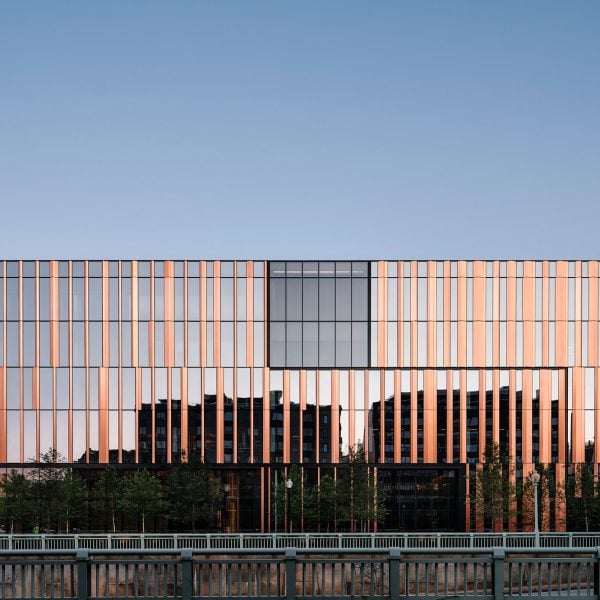Australian architecture studio Bates Smart has referenced Australia’s emerging architectural culture and the “monolithic forms” of its landscape for the design of an embassy in Washington DC, cladding it with glass and copper.
The building replaces a 1960s embassy constructed by Bates Smart McCutcheon on the same property, bringing the mid-century facility into the 21st century.
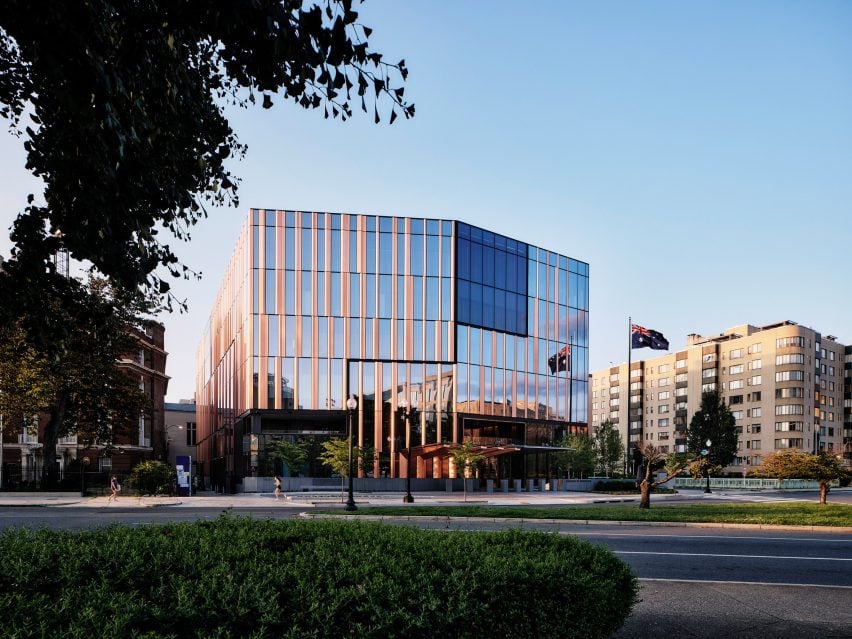
The progression from the 1967 international style embassy to the new architecture is emblematic of Australia’s emerging art and culture identifying and celebrating what is uniquely Australian,” Simon Swaney, the former managing director of Melbourne-based Bates Smart, said.
Completed in 2023, the 9,890-square metre (214,094-square foot) complex completes Scott Circle at the intersection of 16th Street and Massachusetts Avenue and transitions from a residential neighborhood to a commercial district. The building‘s main entrance is oriented south toward the White House.
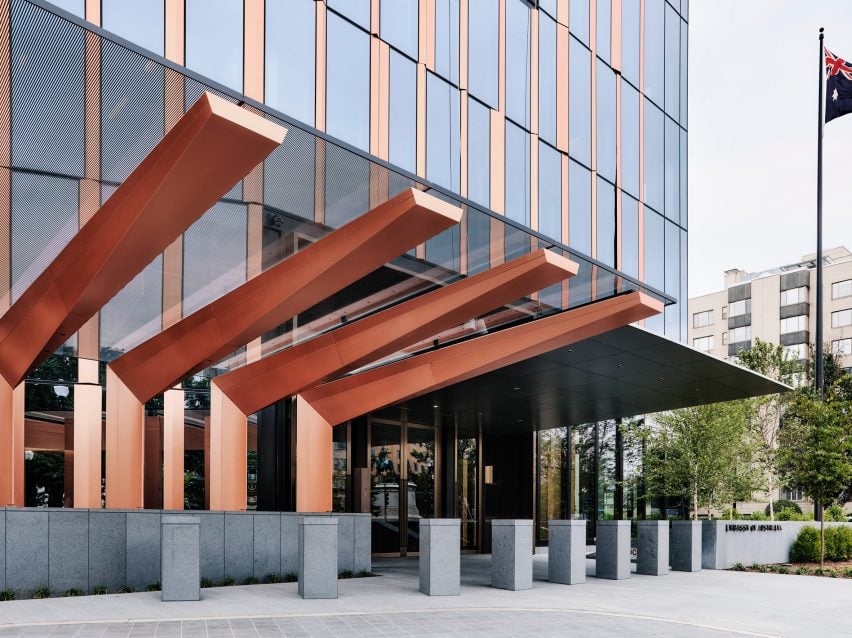
“The embassy’s monolithic form is inspired by Australia’s iconic landscape and embodies the essence of an ancient and vast continent inhabited by the world’s oldest continuous living culture,” the team said.
The rectangular form – with the southwestern corner cut off at a slant to accommodate the radial street organization – is clad in alternating vertical bands of reflective glass and folded copper that create “varying degrees of openness”.
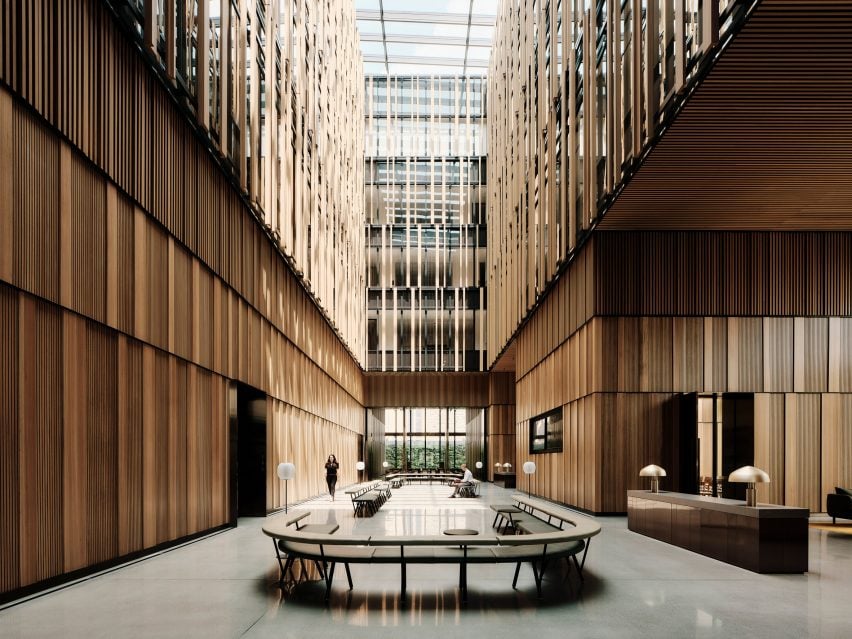
“The appearance of the building changes throughout the day depending on the perspective of the viewer,” the team said.
“A striking tectonic quality, where large shadow line joints define a series of aggregated forms, creates a dialogue between positive and negative space.”
At the entrance, the copper bands run down the facade and bend back upwards to form cantilevering fans next to a thin awning. Inside, the entryway transitions to a large atrium that runs along the north-south axis of the building and connects the ground to the sky.
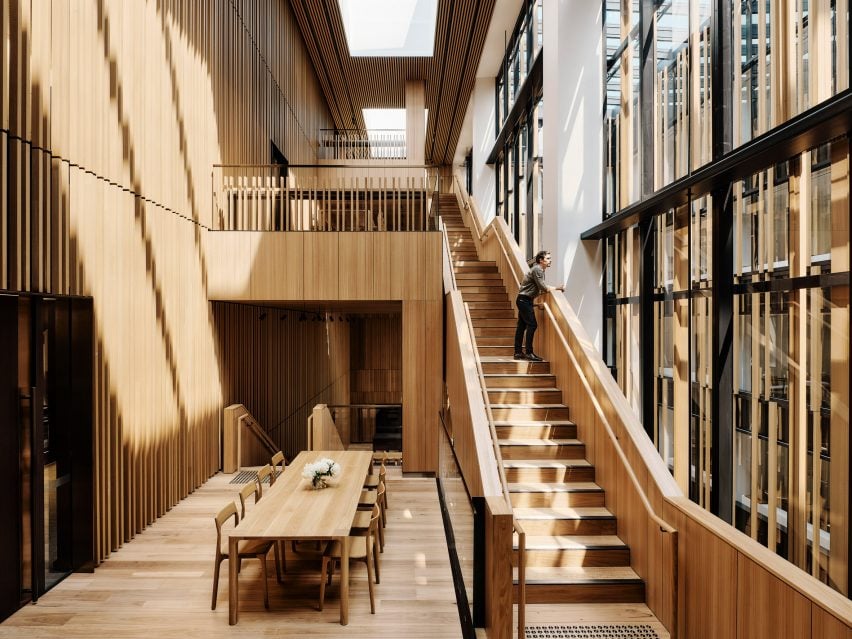
The atrium is wrapped in bands of Australian timber that transition from rough to smooth – mirroring the “protective qualities of the bark during the eucalypt forest’s cycle of growth, burn and regrowth”.
While the ground floor is primarily for public functions, the second and third staff levels are divided into social and work zones, separated from the public realm but a security screening area.
The second floor contains a large informal bar and a series of breakout spaces linked by a feature staircase. Meanwhile, the upper level is more flexible with a large U-shaped open plan that can adapt to agency requirements.
Key social and offices are marked by intricate metallic filigree screens that mediate both light and privacy.
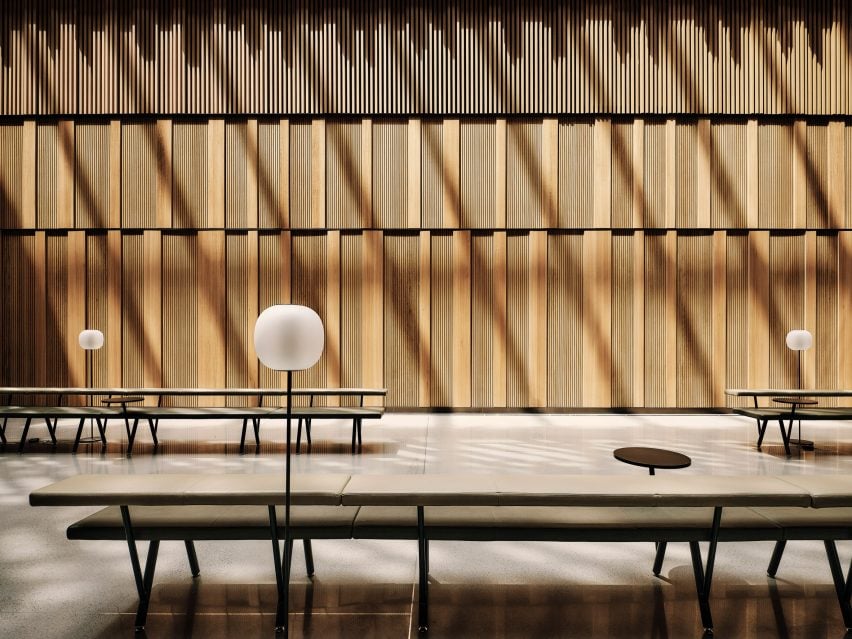
Bespoke rugs designed after Australian First Nations artworks, handcrafted furniture – that was selected through a partnership with the Design Institute of Australia – and a display of Australian and Indigenous artworks complete the interiors.
The embassy is targeting a LEED Gold rating and Green Building Council of Australia’s Greenstar rating.
Recently Bates Smart completed a skinny skyscraper in Melbourne that measures just 11.5 metres wide and proposed a football stadium suspended above Sydney’s Central Station.
The photography is by Joe Fletcher.
Project credits:
Developer: DFAT OPO
Architect and Interior Designer: Bates Smart
Architect of record: KCCT
General contractor: Clark Constructions
Project manager: Jacobs
Cost consultants: Rider Levett Bucknall
Structural and facade engineer: Aurecon/SGH
Mechanical, electrical, fire, hydraulic, vertical transport, AV, Security/communications consultants: Aurecon/Interface
Fire engineering, acoustic, ESD consultant: Aurecon/Arup
Signage: Ongarato
Traffic consultant: Wells & Associates
Civil consultant: Aurecon/Sorba
Kitchen consultant: Chris Live Design/Culinary Advisors
Landscape consultant: TCL Wiles Mensch
Lighting consultant: Electrolight/ONE SOURCE
Townplanning consultant: Holland & Knight
DDA/OHS consultant: du Chateau Chun

